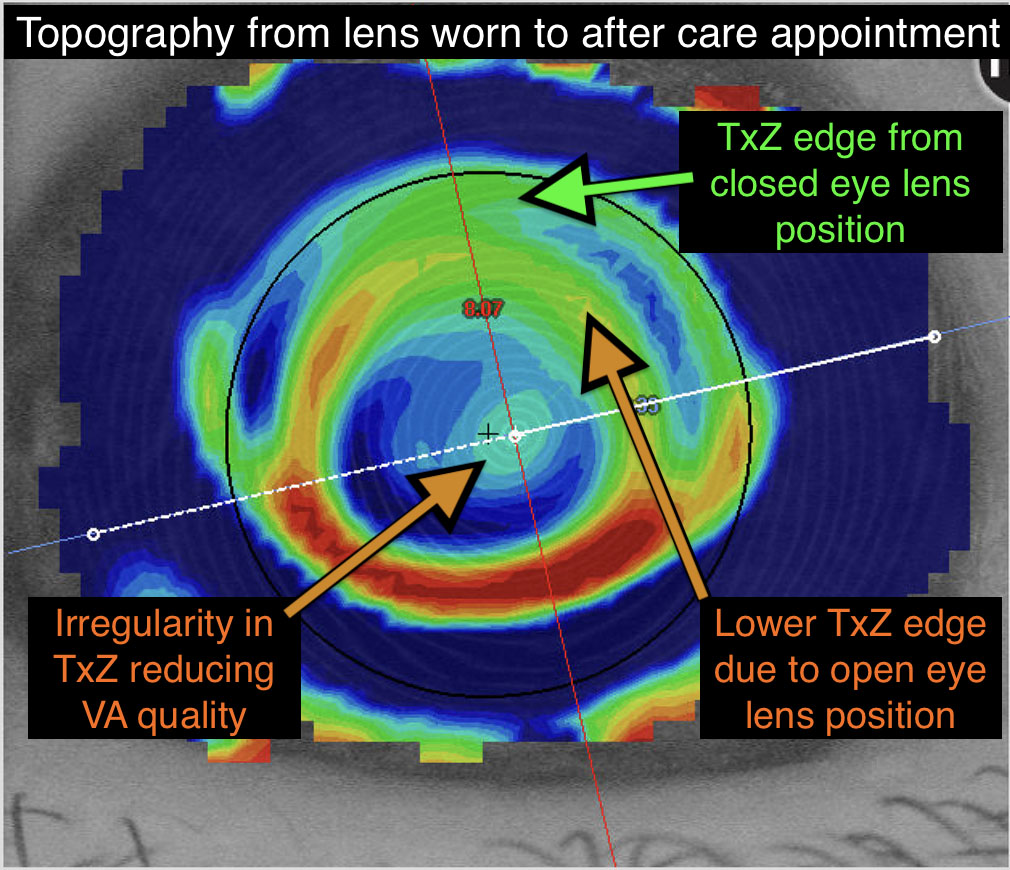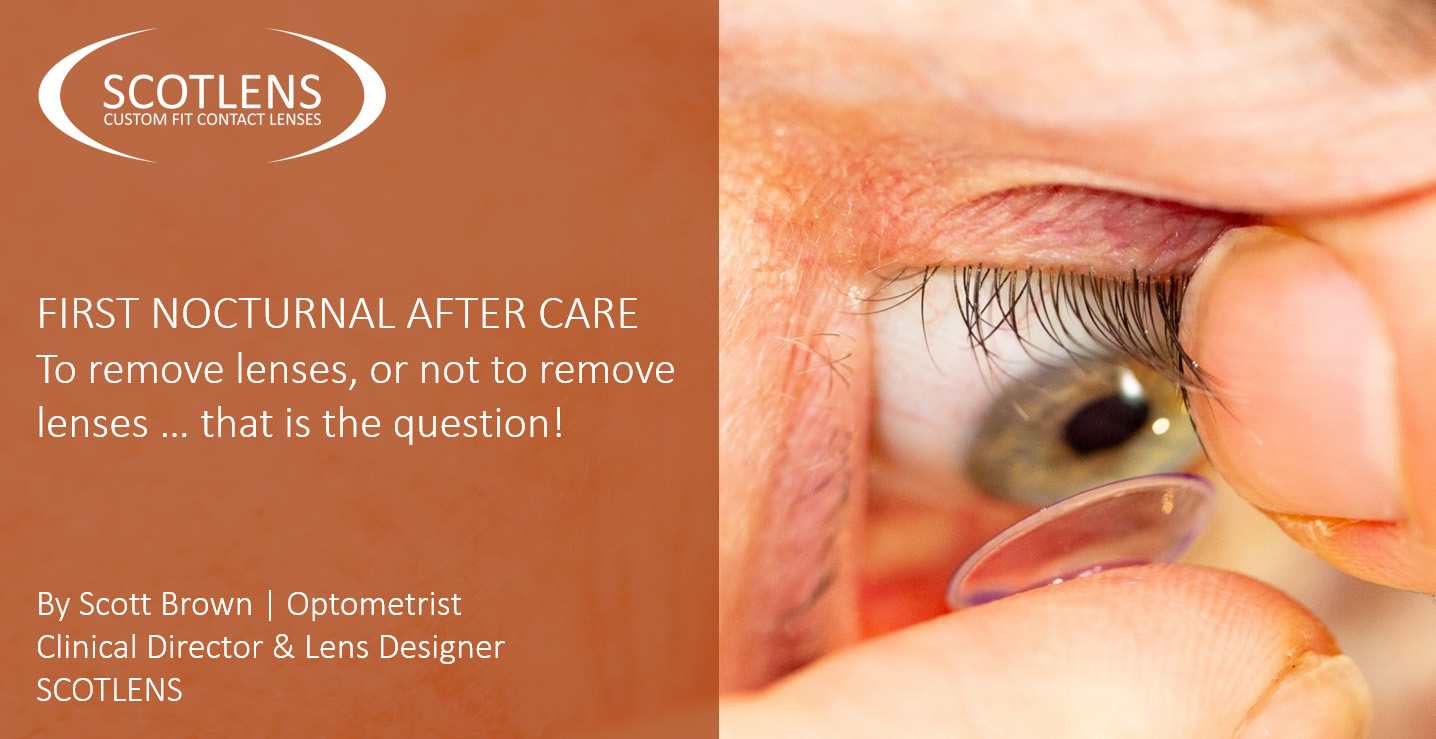By Scott Brown
Scotlens | Clinical Director & Lens Designer
“FIRST AFTER CARE: To remove lenses, or not to remove lenses … that is the question!”
I am often asked this question and have noticed more and more Optometrists asking patients to come to their first appointment with their lenses in. My advice is to attend the first appointment with their lenses out. My reasoning is below…
Patients are best to remove their lenses when they wake for all after cares. When the eye is open, lenses always sit in a different position to behind the closed lid. If they are awake for an hour or two before you see them, this is long enough to cause distortion to the overnight treatment zone effecting VA quality and topography.

The advantage to leaving the lenses in means the patient can see fully to get to the appointment. But generally they will be enthused by the subjective improvement of their vision anyway and the distortion on the topography and VA means less accurate clinical information is available. Patients will know their vision will regress on the first few days, so waking with clear vision is more encouraging even if it has worn off a bit before they see you than distorted vision when the lenses are removed in practice. Plus patients are still not adapted to the lens sensation yet, so they appreciate not needing to keep the lenses in until their appointment.
When you collect the patient from your waiting room their vision will have regressed slightly, so ask “How was your vision when you took the lenses out?”
Regression rates can vary and some patients may have woken early, so will have regressed more. The patient will typically advise, “it was good when I took the lenses out, it has worn off a bit now”. Their impression of “good” is what the lenses will correct to, or even better.
- Refract the patient unaided binocular, monocular aided and not the refraction and VAs.
- Check the corneas for any stain. Significant staining is rare and will be visible at an after care appointment hours after removal.
- Do topography. This will be a partial effect, but the centration of the lens is what we want to see on day one topography.
A typical day one result is some under correction with good acuity when corrected (expect the same cyls as the pre-OK spec Rx), a clear cornea and a central topography.
The correction will improve and stabilise by two weeks.
AFTER CARE | week 1-2 and within a month
For the aftercare at between week one and two, and any other needed within the first month, it is better to do them early in the day so the full result without regression is assessed. The routine is the same as day one, refractions and VA, cornea and topography. Once a month of wear is passed, the refraction will be accurate for any over specs needed. These can be beneficial to provide full distance VA for night driving if monovision is corrected with the night lenses, or to fully correct residual Rx like cyls.
Aftercares after scheduled replacement of lenses is best done about a week to two after lenses are provided. Old lenses can warp, or may not be the lens the patient is convinced they are. So, issuing a new lens, means the results are more likely accurate. Any adjustments can be done to the lens under the warranty.
Unexpected or one-off results
Patients can also cause odd one-off results that we sometime see at after cares. If their correction was good at the first month of fitting, then it should not change. Progressing myopia will result in undercorrection which may be expected with a young myope, but generally correction will be stable. If there is an unexpected result, it is worth asking the patient if they were aware of it before. If they are unsure, ask them to score each eye’s vision out of 10 for the following days and see if it was a one off, likely a trapped bubble/debris on insertion.
Rx change
If it is not a one-off then it may be Rx change. If so, correct the residual Rx in a new lens. If reduced VA, or induced cyl, get the patient to insert lenses with preservative free drops like OcuDry and check there is no roughness to the lid conjunctiva indicating solution or seasonal allergy. Corneas do not change through adulthood, so stopping lens wear to wash out the effect is generally never needed. It is preferable to alter the lens fit to improve the VA, but if there is no visible reason for the change in correction, a month long wash out may be needed.




